Turkmenistan recipes from this country located in Central Asia, known for its rich food culture are different than most places we visit. One of the most prominent aspects of Turkmenistan’s culture is its cuisine. Turkmenistan food culture is a unique blend of various influences, including Persian, Russian, and Central Asian, resulting in a rich and flavorful group of Turkmenistan recipes.
One of the most iconic dishes in Turkmenistan is Manty, a type of dumpling that is similar to Chinese or Mongolian dumplings. Manty is typically filled with a mixture of minced meat, onions, and spices, and is steamed until tender. Manty is often served with a side of hot chili sauce, known as “shorpa.”
Another popular Turkmen recipe is Shashlik, which is similar to a kebab. Shashlik is made with skewered meat, usually lamb or beef, that is marinated in a mixture of vinegar, oil, and spices, and then grilled over an open flame. Shashlik is often served with a side of fresh vegetables, such as tomatoes and cucumbers.
Turkmenistan recipes are also known for the large variety of soups and stews. One of the most popular soups in Turkmenistan is shorpa, a hearty soup made with meat, potatoes, carrots, onions, and a variety of herbs and spices. Another popular dish is pilaf, a rice dish that is often served with meat, vegetables, and a variety of spices.
Bread is an essential part of Turkmen cuisine, with a variety of traditional breads available in bakeries and markets throughout the country. One of the most popular types of bread is called “lepeshka,” which is a flatbread that is cooked in a tandoor oven. Lepeshka is often served with butter or oil, and is a staple of Turkmen cuisine.
Tea is also an important part of Turkmen culture, with a variety of teas available throughout the country. One of the most popular types of tea is green tea, which is often served with sweets and pastries. Turkmenistan is also known for its variety of dried fruits, nuts, and sweets, which are often served as a dessert or snack.
One of the most unique aspects of Turkmenistan food culture is the tradition of hospitality. In Turkmen culture, it is common for guests to be treated like royalty, with an abundance of food and drink provided by the host. This tradition of hospitality is known as “goşnak,” and is a symbol of the warmth and generosity of Turkmen culture.
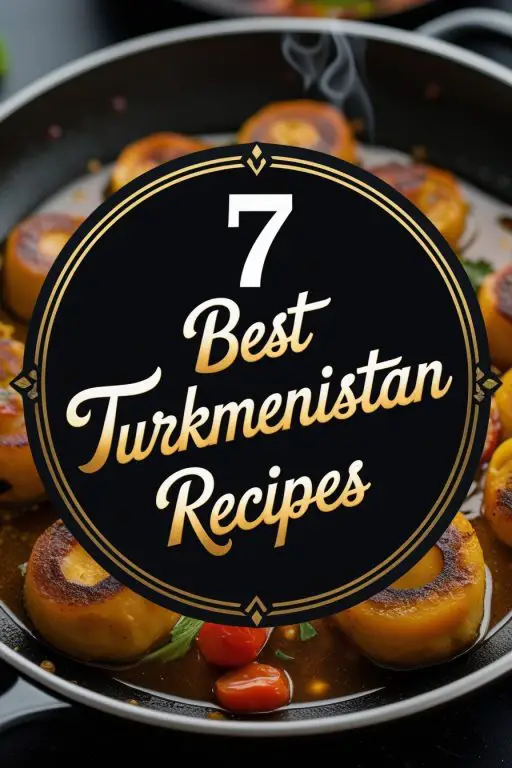
7 Easy Turkmenistan Recipes
1. Shashlyk
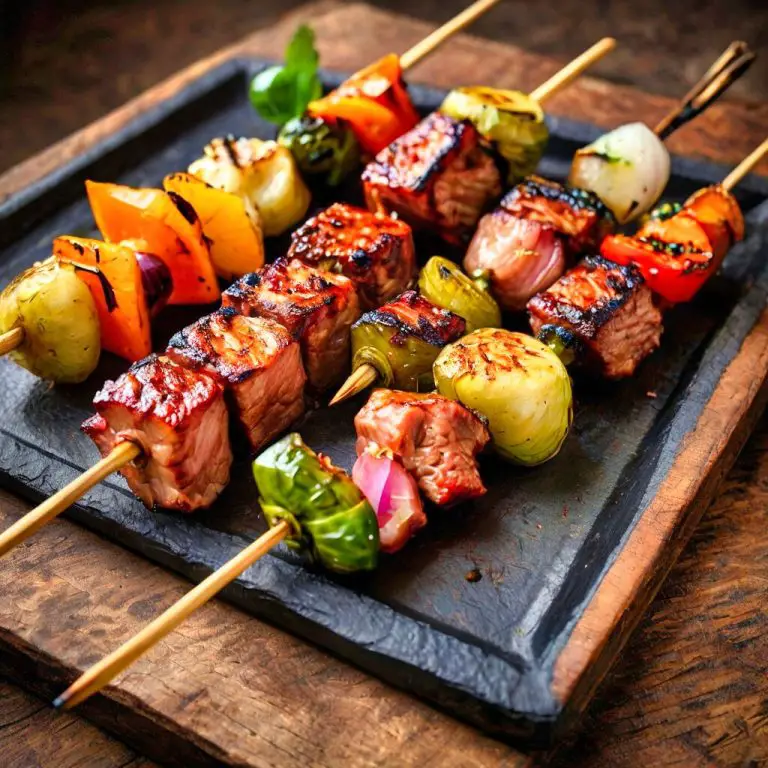
Shashlyk is a skewered and grilled meat dish popular across Central Asia, including Turkmenistan, where it holds a central place among traditional foods. Typically prepared with lamb, beef, or chicken, the meat is cut into cubes, marinated, and cooked over open flames, giving it a smoky aroma and tender texture.
In Turkmenistan recipes, shashlyk is often seasoned simply with salt, onions, and vinegar, letting the flavour of the meat stand out. It is commonly served with fresh bread, salads, or grilled vegetables, making it a complete meal. Shashlyk is not only a household dish but also a popular street food, with vendors preparing skewers fresh for customers.
It plays an important role in gatherings, weddings, and holidays, where large quantities are cooked to share among guests. Among Turkmenistan recipes, shashlyk highlights the emphasis on grilled meats and communal outdoor cooking traditions.
2. Gugelhupf Cake
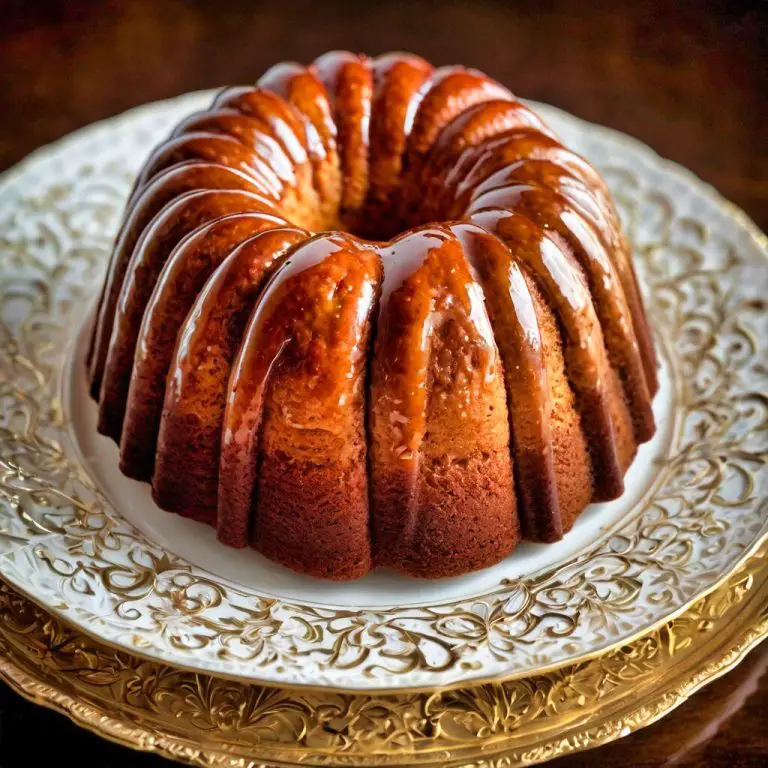
Gugelhupf cake, though originating in Central Europe, has found a place within Turkmenistan recipes due to historical cultural exchanges and culinary influences. This cake is baked in a distinctive ring-shaped mould, creating a light, airy texture with a golden crust.
Ingredients often include yeast dough enriched with butter, eggs, raisins, and almonds, though variations can be adapted to local tastes. In Turkmen households, gugelhupf is served at festive gatherings, tea times, and family celebrations. Its sweet, mild flavour contrasts with the country’s hearty savoury meals, offering balance within the cuisine.
Gugelhupf cake reflects the way Turkmenistan recipes incorporate influences from beyond their borders while still maintaining their identity. It demonstrates that even international dishes can become localised, adopted into the rhythm of family dining. Today, this cake continues to be enjoyed as both an everyday treat and a festive dessert, linking tradition with imported culinary ideas.
3. Lagman
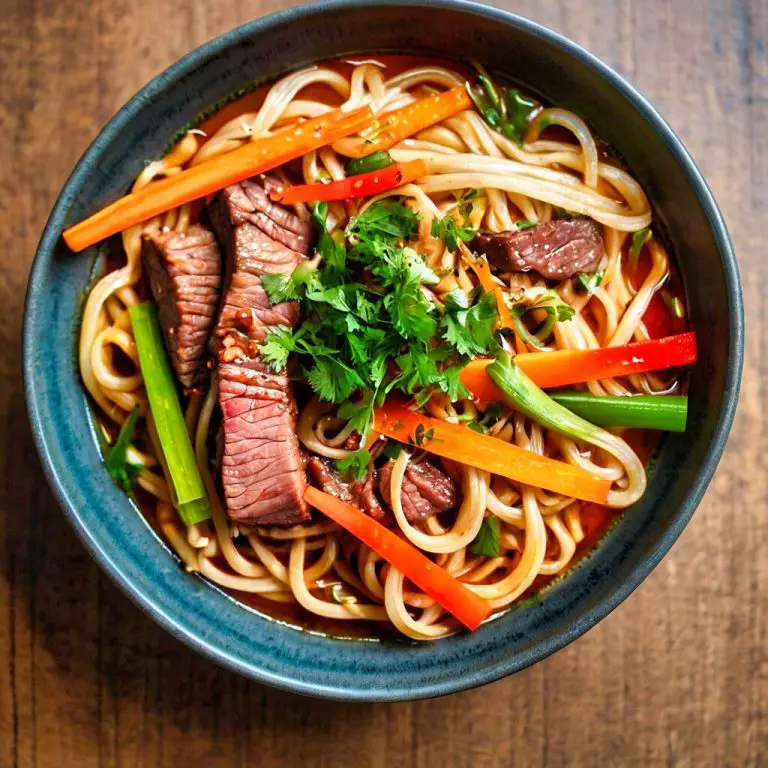
Lagman is a noodle dish that appears in several Central Asian cuisines, including Turkmenistan recipes, where it is prepared as a hearty soup or stir-fried meal. Hand-pulled noodles form the base, combined with beef or lamb, tomatoes, peppers, and onions. The result is a colourful, filling dish with a balance of vegetables and meat.
In Turkmenistan, lagman is often enjoyed as a main course, served in large bowls for communal dining. The dish’s origins are linked to Chinese influence, yet it has been adapted with local flavours and cooking styles over centuries. Among Turkmenistan recipes, lagman showcases both resourcefulness and creativity, using local produce to enrich the noodles.
It is valued for its adaptability, as households can adjust the ingredients according to seasonal availability. Lagman continues to be a cornerstone of Turkmen cuisine, offering a comforting and nutritious meal that reflects cultural exchange and tradition.
4. Turkmen Kebap
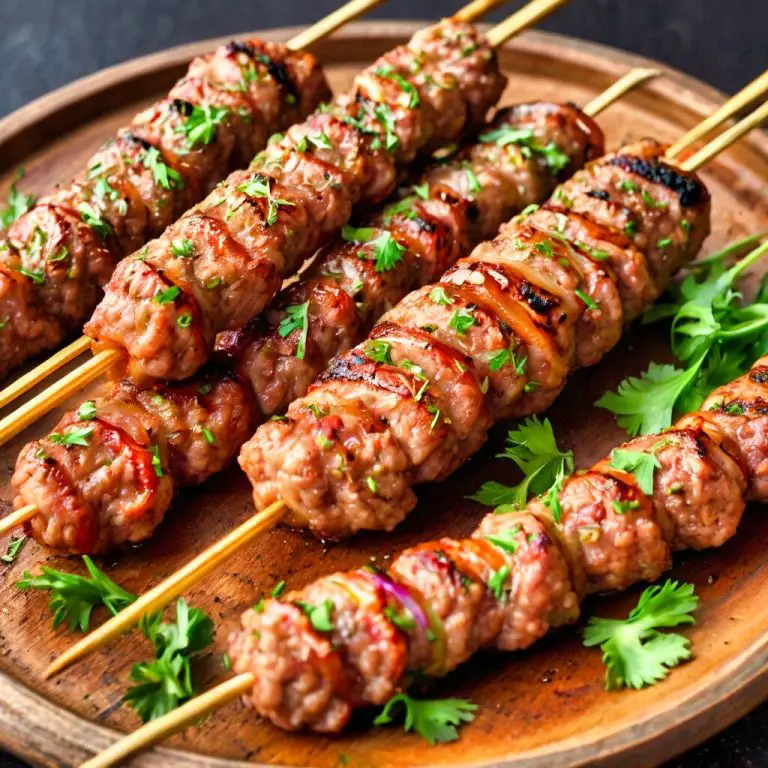
Turkmen kebap is a grilled meat dish that holds an important place in Turkmenistan recipes, prepared with lamb, beef, or chicken. The meat is marinated with simple seasonings such as salt, pepper, and onions before being skewered and grilled over open flames.
The kebap is often served with flatbread, raw onions, or fresh herbs, making it a straightforward yet satisfying dish. In Turkmenistan, kebap is commonly enjoyed during gatherings, outdoor meals, and festive occasions, where grilling meat symbolises hospitality and abundance. Street vendors also prepare kebap, making it widely accessible across towns and villages. Its smoky flavour and tender texture reflect the emphasis on meat as a dietary foundation in Turkmen cooking.
Among Turkmenistan recipes, kebap represents both the cultural tradition of grilling and the shared experience of communal dining, where skewers are passed around and enjoyed together with bread and conversation.
5. Butternut Gutap
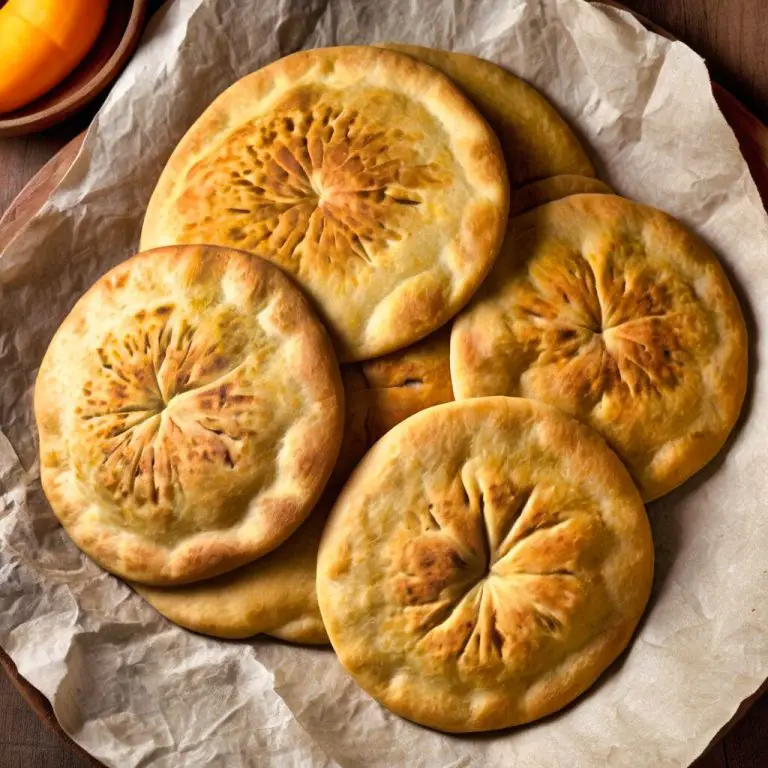
Butternut gutap is a filled pastry that belongs to the family of Turkmen hand pies. In Turkmenistan recipes, gutap is a well-known dish prepared with thin dough stuffed with various fillings such as meat, pumpkin, or vegetables.
In this version, butternut squash is used, giving the gutap a sweet, nutty flavour balanced by onions and spices. The pastries are typically baked or fried until golden, creating a crisp exterior with a soft interior. Gutap is enjoyed as both a snack and a meal, often paired with tea. It is especially popular in rural areas, where local produce like squash is abundant.
As one of the distinctive Turkmenistan recipes, butternut gutap demonstrates how traditional dough-based foods adapt to seasonal ingredients while maintaining their cultural identity. It is a dish that highlights both resourcefulness and the importance of pastries in everyday Turkmen meals.
6. Turkmen Traditional Vegetable Stew
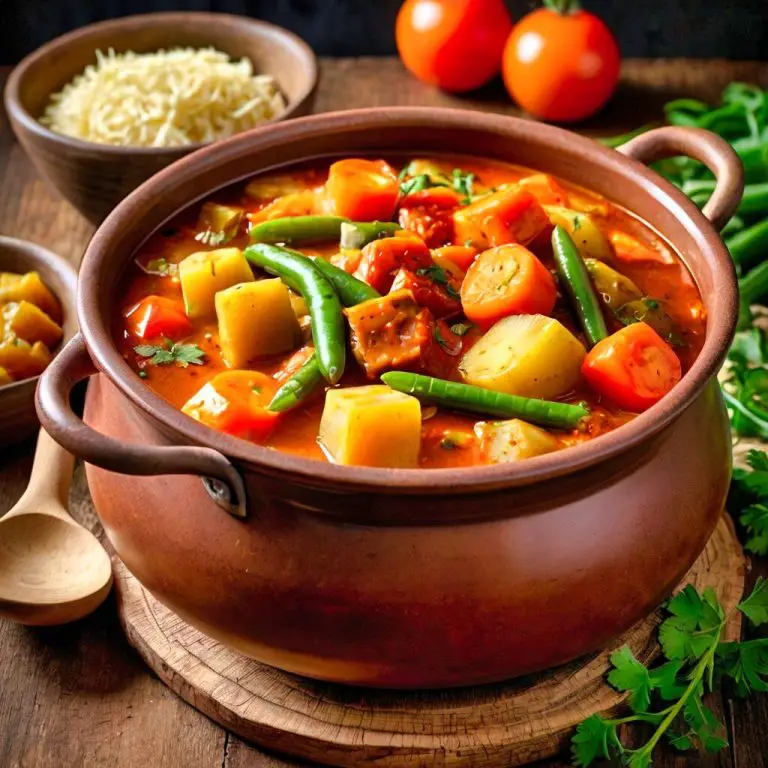
Turkmen vegetable stew is a slow-cooked dish that highlights the importance of local produce in the country’s cuisine. Among Turkmenistan recipes, it is valued for its adaptability, as the ingredients can vary depending on season and availability.
Common components include potatoes, carrots, tomatoes, onions, and peppers, often simmered together with spices and sometimes small amounts of meat for added flavour. The result is a hearty, colourful stew served with bread or rice. In rural households, vegetable stew is a practical way to feed large families with limited resources, making use of what is grown in local gardens.
It is considered an everyday dish but can also be enhanced for special gatherings by adding richer ingredients. Among Turkmenistan recipes, vegetable stew reflects the balance between meat-heavy meals like shashlyk and lighter, plant-based foods, offering nourishment and variety in the national diet.
7. Mushroom Beshbarmak
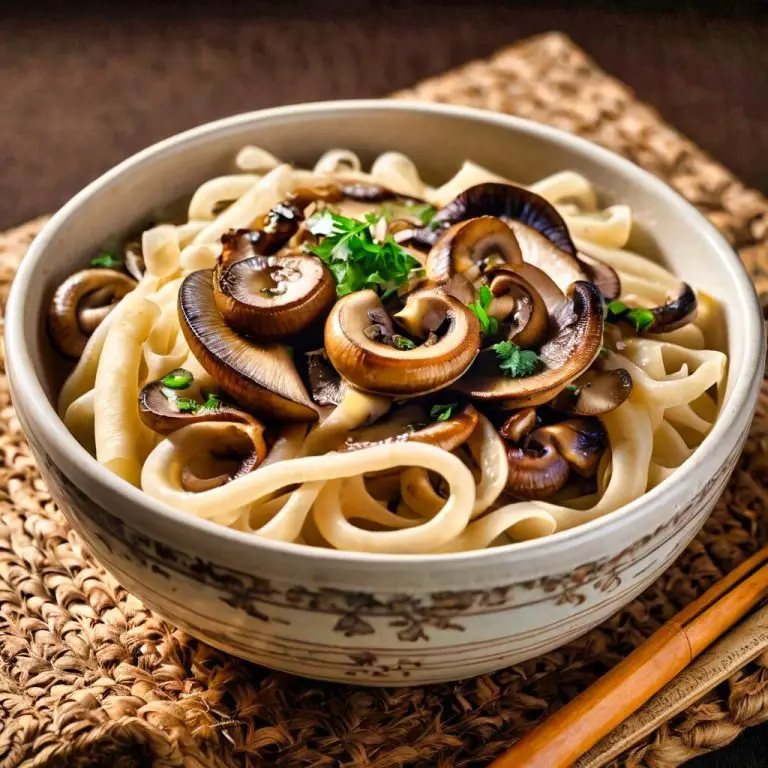
Beshbarmak, meaning “five fingers,” is the national dish of several Central Asian countries, traditionally made with boiled meat and noodles. Mushroom beshbarmak is a vegetarian variation that has gained recognition within modern Turkmenistan recipes. Instead of lamb or beef, mushrooms are used as the main ingredient, simmered with onions and served over wide, flat noodles.
The dish retains the ceremonial presentation of beshbarmak, often prepared in large portions for family or communal meals. In Turkmenistan, this variation offers an alternative for those seeking lighter, plant-based meals while still honouring tradition. Mushroom beshbarmak demonstrates the adaptability of classic recipes to new preferences, showing how heritage dishes evolve over time.
Among Turkmenistan recipes, it is notable for blending modern dietary choices with cultural symbolism, ensuring that the dish remains accessible to more people while preserving its connection to Turkmen identity.
